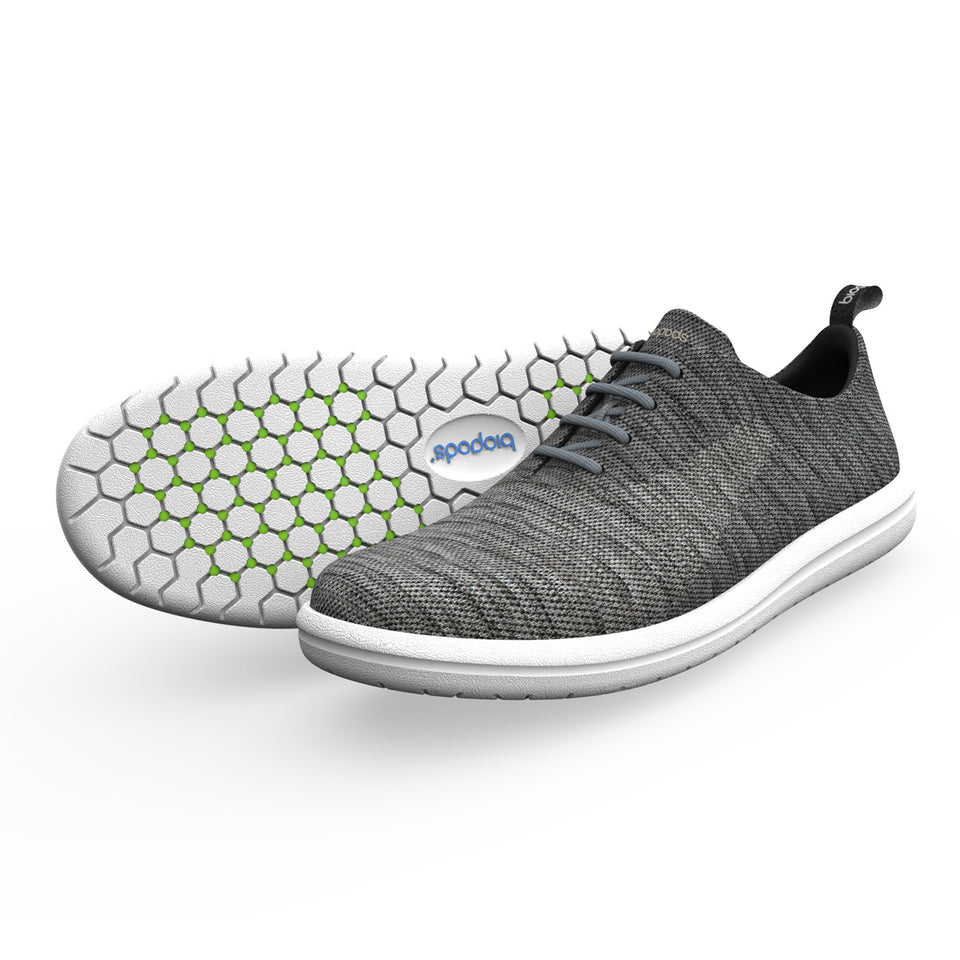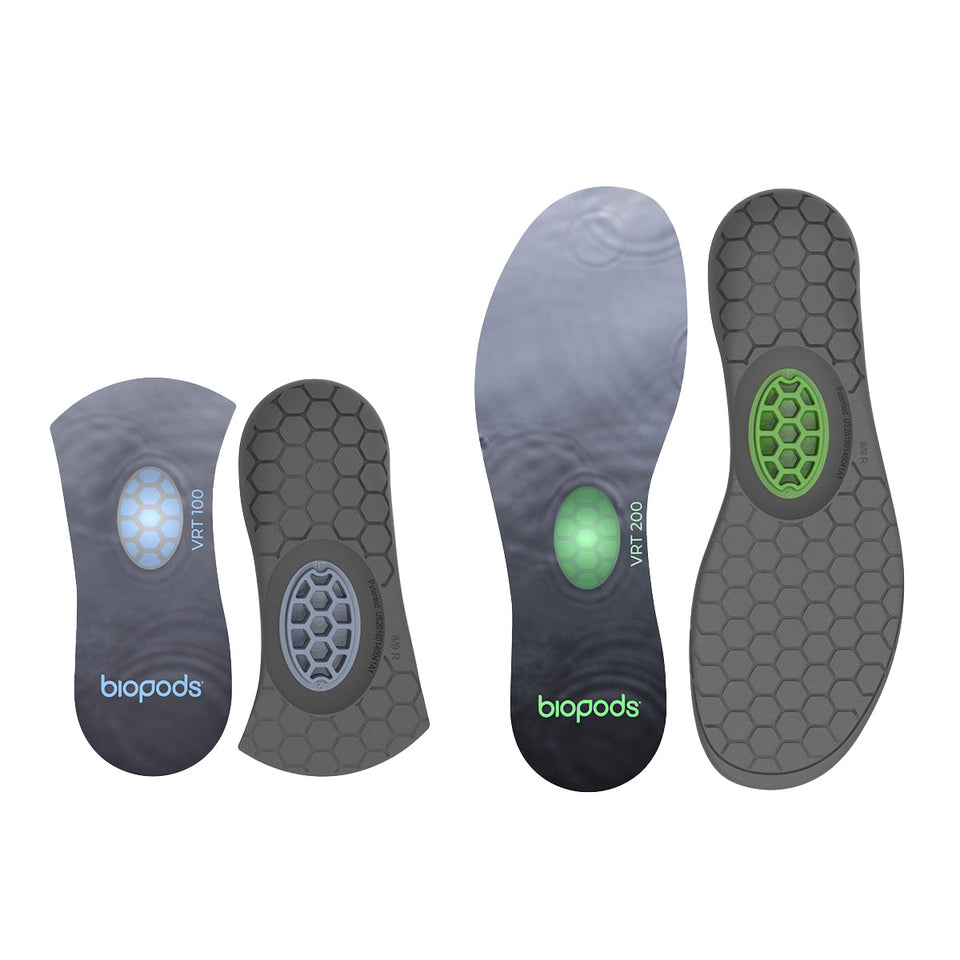Sesamoiditis
The symptom of Sesamoiditis is pain directly beneath the base of the big toe that gradually develops gradually into a dull ache and intensifies over time until it becomes an intense throbbing.

The sesamoid bones are two tiny bones located within the hallucis longus tendon, which is the flexor tendon that is attached to the big toe. These bones rotate forward and backward about two grooves in the first metatarsal head, acting as levers to increase the tension of the flexor tendon. Because of their location and function, the sesamoids are subject to intense pressure while walking or running. All direct pressure at this site is painful. Normal walking becomes so painful that gait is altered so that the heel and/or the outer margin of the foot bears the body’s weight. Over time, this can lead to a cascade of compensatory maladapted gait behaviors.
Dr. Sam Dubé discusses sesamoiditis
Learn about the symptoms, causes, and benefits of different treatment options.
 What causes sesamoiditis?
What causes sesamoiditis?
In addition to trauma, sesamoiditis commonly develops as a consequence of poor foot mechanics caused by footwear use.
Over time, poor foot mechanics become the maladapted functional norm, which predisposes the sesamoid bones to injury and damaging stresses. The sesamoids become situated so that they are subject to greater impact forces or the surrounding tendon is subject to excessive tension.
There are three primary causes that, individually or collectively, contribute to sesamoiditis-related maladaptive neuromuscular function:
-
Inadequate firing of the flexor hallucis longus muscle
-
Improper timing for firing of the flexor hallucis longus muscle
-
Wearing restrictive footwear that inhibits the required raising of the great toe and corresponding raising of the arch system
Each can result in less-than-optimal sesamoid positioning—side to side, front to back, or both—contributing the excessive sesamoiditis related loading and tension forces.
Over time, stresses created by the excessive pressures lead to local tissue damage and inflammation around the sesamoid bones.
At rest, the sesamoid bones are usually positioned slightly behind the first metatarsal head. Ideally, while walking or running, the following takes place:
-
The sesamoids move forward, gliding in the groove around the first metatarsal head as the great toe rises
-
The great toe rises higher with increased activity levels, causing the sesamoids to rotate to a position in front of the first metatarsal head
-
The great toe rises before the foot contacts the ground in anticipation of the expected forces
In this forward position, the sesamoids are subjected to significantly lower impact and tension forces.
Modern science has identified that the nervous system plays a critical role in stabilizing the feet and ankles when walking or running. It is now understood that poor foot mechanics are a symptom of inefficient neuromuscular function caused by conventional footwear use. In fact, conventional footwear use causes poor neuromuscular function throughout the feet, legs, hips, and back, when:
-
the soles of the feet don’t receive the subtle, varied stimulus that the nervous system requires for healthy function, and
-
snug toe boxes, stiff midsoles/outsoles/uppers and tight lacing restrict healthy foot movement.
To learn more about the latest science, click HERE.
The best way to prevent and treat sesamoiditis is to retrain healthy neuromuscular mechanics and to use footwear that is soft, flexible, and roomier in the forefoot.
Conventional treatment methods for sesamoiditis
Since the late 1890s, the standard treatment for sesamoiditis related poor foot function has been to artificially support the foot with an orthotic. Other conventional sesamoiditis treatment options include:
-
Taping
-
Cushioning
-
Local tissue therapy
-
Injections
-
Surgery
Modern science has transitioned away from using long-term support and cushioning on any body part because it causes a progressive weakening of the body part being supported or cushioned.
The modern approach to treating sesamoiditis
Science underscores the body's inherent ability to restore and improve its own function when presented with the appropriate challenges. This principle lies at the heart of contemporary therapeutic methods used to correct and enhance neuromuscular function, particularly in foot health.
Therapeutic rehabilitation, focusing on the body's natural mechanics and responses, emerges as the safest and most effective strategy for addressing the underlying causes of conditions like sesamoiditis shifting the focus from temporary relief to long-term health and functionality.
Understanding the Fundamentals:
-
Proper Technique: This refers to rehabilitative exercises that concentrate on re-establishing optimal neuromuscular function. It's about reinforcing healthy mobility, muscle strength, stability, and alignment in a safe manner.
-
Right Stimulus and Right Movement: Effective movement is predicated on the quality of sensory information the brain receives, particularly from the soles of the feet. The feet's nerve endings are crucial in transmitting this data, ensuring coordinated movement throughout the musculoskeletal system. When sensory input is compromised—as is often the case with conventional footwear—the body's natural reflexes and movements can be inhibited.
Adopting the Modern Approach:
-
Barefoot Walking: Engage in barefoot walking, particularly on natural surfaces, as frequently as feasible. This practice delivers the optimal stimulus for healthy neuromuscular function, promoting the right kind of movement.
-
Utilization of Biopods®: Incorporate Biopods footwear or insoles into your routine. Our footwear is designed to create an ideal environment for proper foot technique, while our insoles are crafted to enhance the sensory feedback in your conventional shoes. For optimal results, use in footwear that is soft, flexible, and allows for natural movement of the arches and toes.
-
Consultation with Healthcare Professionals: Prior injuries might have led to the formation of fibrotic scar tissue. It's advisable to consult with a healthcare practitioner about therapies that can address these issues to facilitate better foot function.
Conclusion:
The modern approach to foot health is integrative and proactive, focusing on encouraging the body's natural ability to heal and maintain itself. It's an investment in your long-term health and wellbeing, steering away from temporary fixes and instead, fostering lasting, comprehensive foot health.
Consult with your healthcare practitioner to ask about employing soft tissue mobilization therapies to address the fibrotic scar tissue that may have formed prior to using Biopods.
For more information on what to expect when using Biopods, click HERE.
* Engineered to provide the perfect blend of stimulus and freedom, our shoes are designed to promote the optimal health of your feet.
Dive into a world where footwear isn’t just an accessory but a means of enhancing your natural foot mechanics and overall well-being.
**Designed to deliver the precise stimulus needed for healthy foot function, these insoles are your first step towards transforming conventional footwear into a platform for improved foot health.
Note: For maximum effectiveness, pair with soft, flexible footwear that's loosely laced. Certain restrictive or heavily cushioned shoes may diminish the insoles' benefits. Consult our Footwear Guide to ensure your shoes are compatible with the Biopods philosophy of promoting foot health.
* Biopods Footwear provides the ideal stimulus to the soles of the feet and freedom of movement required for optimal foot health.
** Biopods Insoles provide the stimulus to the sole's of the feet arch area required for healthy foot function. Use the insoles in soft, flexible, loosely laced footwear for best results.
When used in stiff, restirictive, and cushioned footwear, the insoles' effectiveness diminishes relative to the stiffness, restricitiveness, and cushioining. Some footwear design characteristics are incompatible with healthy foot function and Biopods Insoles. Please see our Footwear Guide for additional information.
Experience exceptional pain relief, comfort, and performance. RISK FREE!
120 day
Money Back Guarantee
1-8 weeks
Results Guaranteed
99.5%
Customer Satisfaction
Sezzle
Pay In Installments







